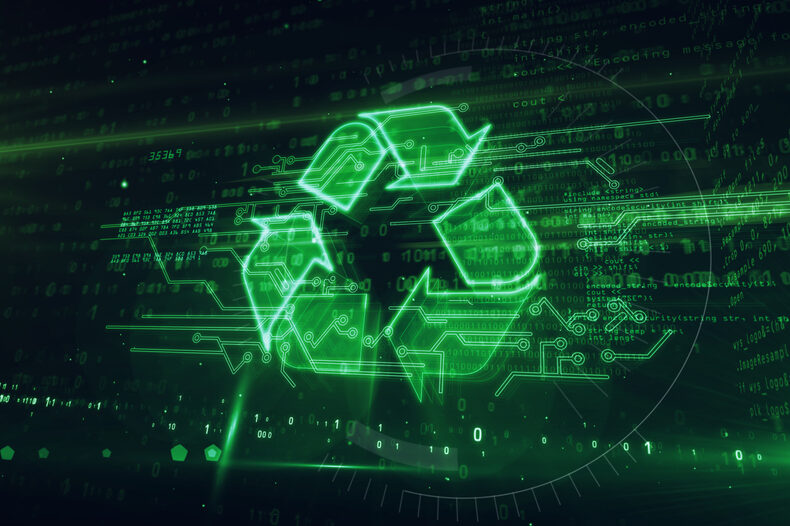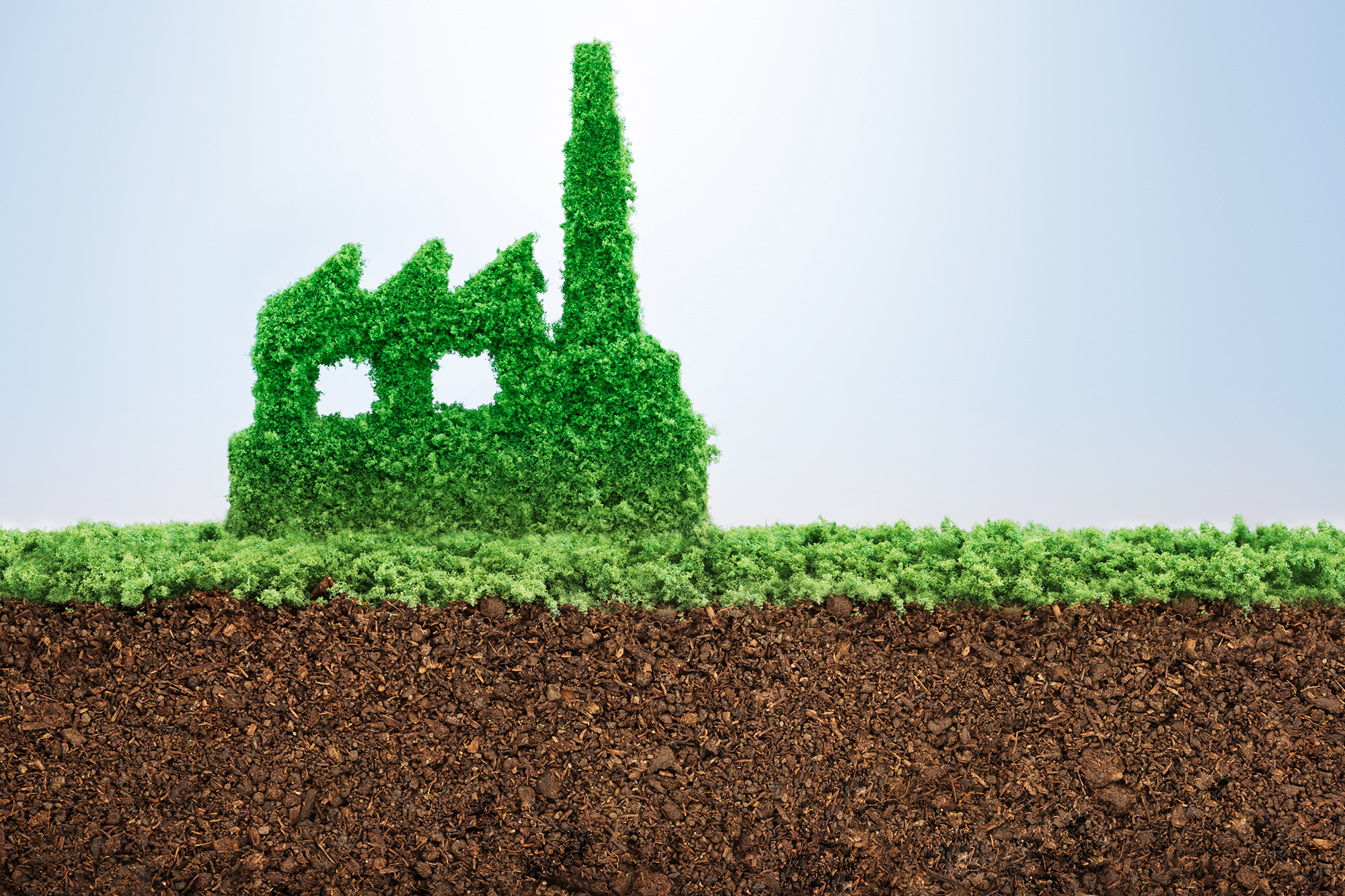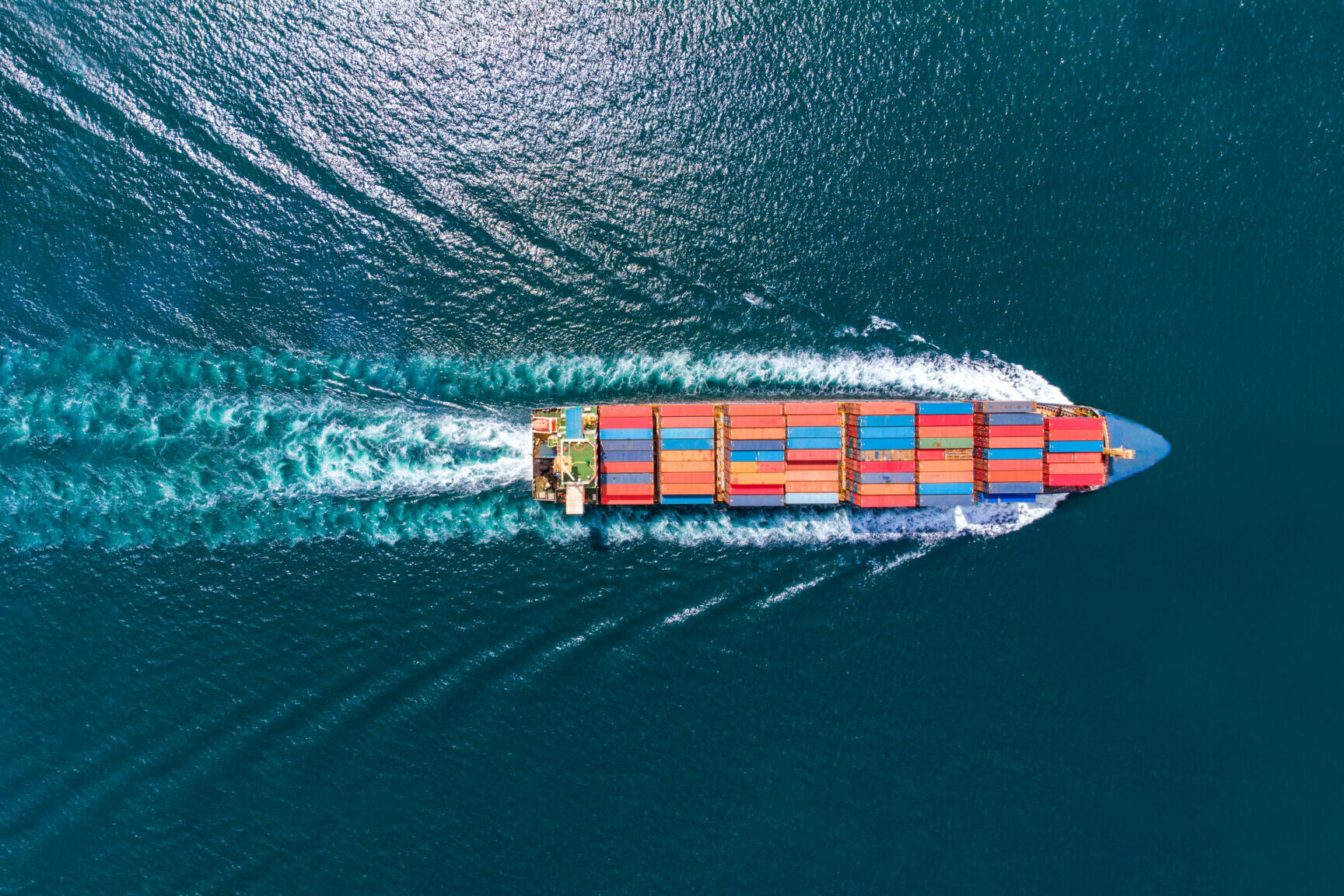From poacher to gamekeeper
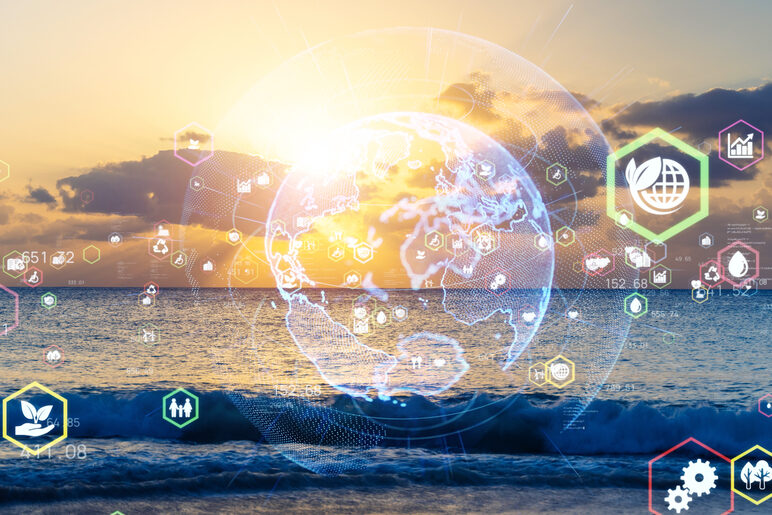
Royal Van Oord, one of the world’s largest dredging companies, has turned its attention to renewable energies in order to help protect the oceans. Mare Straetmans, Van Oord’s Director for Digital Transformation, speaks to Tech For Good about how it’s planning to become a digitalised and sustainable enterprise.
Can one of the oldest and largest dredging companies in the world become a paragon of sustainable development?
This is the aim of Royal Van Oord, the 150-year-old Dutch maritime contractor. The owner of one of the world’s largest dredging fleets, Van Oord has worked on enormous projects such as the construction of Dubai’s famous Palm Island. As well as being involved in the offshore oil and gas business, traditionally its work involves dredging, land reclamation and maritime engineering.
However, like all companies in Van Oord’s industry, it came in for criticism due to the ill-effects of dredging on maritime ecosystems. Sediments often damage coral reefs and fisheries, and smother seagrasses, which constitute the key food source of dugongs and sea turtles. The release of toxic chemicals can also increase water turbidity, littering the ocean and provoking the spread of harmful metals throughout the maritime food chain.
To combat this, over a decade ago Van Oord embarked on a journey towards a business model centred around renewable energies and, in particular, offshore wind farms. Once perceived as an enemy to the ocean, Van Oord now wants to play an active role in preserving it.
These are not just empty words. Last autumn, Van Oord secured a large contract for Taiwan’s megawatt Greater Changhua wind farm program and signed a MOU with NYK for joint ownership of its new Japanese-flagged offshore wind installation vessels. In total, throughout 2019, the company made €571 million in revenue from the offshore wind business. It is becoming a core focus of Van Oord’s business.
However, Van Oord’s transition is still in its early stages and has many challenges to overcome. One of them is the need for more detailed information regarding the impact of the company on the environment, as well as the sustainability of the company long-term. In order to realise these aims, digitalisation is a fundamental piece of the puzzle.
Last May, Mare Straetmans became Van Oord’s Director for Digital Transformation and was entrusted with the task of digitising its operations. He describes his role to Tech For Good as “getting the company to see the potential and start embracing the digital transformation”.
Straetmans recognises the environmental impact of Van Oord’s traditional activities. He describes dredging as “a vacuum cleaner that takes away from the beds of seas and rivers to make sure that ships can go through” and admits that dredging “invades the integrity of ocean beds or river beds”.
However, dredging doesn’t cease to be a necessary activity. “Otherwise lands would be whipped away by the sea”, Straetmans explains; a risk that climate change has only worsened.
“Maritime is a bit conservative, and is only now engaging with digitalisation and I think that, for Van Oord, this is no different,” Straetmans says. “It’s a huge company that needs everything it can do to compete. And they’ve asked me to help there. So I’m working with the wind business unit and I’m working with the dredging business unit to make digital products, to help them become more efficient and to give clients a better experience. That’s what you want. But taking these steps in a multibillion-dollar business is not easy.”
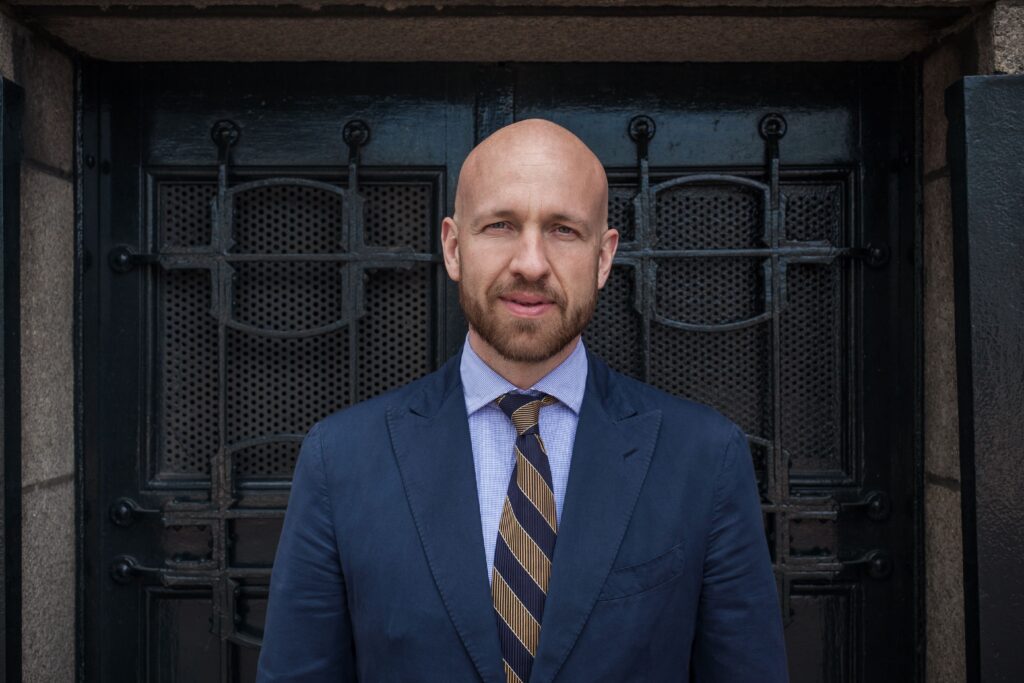
Van Oord’s goal is, in Straetmans words, to ensure “a sustainable future for future generations”. He stresses the two drivers that motivate this aim: the financial imperative, which is the offshore wind business; and the commitment to sustainable office operations.
“It’s a huge challenge,” he says. “It’s not easy to change assets that have a 30-year life span. So basically we’re working with machines that have been built 25 years ago, so that has an impact on the way the machine operates and what it does. And it’s not easy to change that for the newer ships. It’s obviously easier to make them more sustainable, but this is a big challenge.”
It is not only Van Oord that has found adapting to a more sustainable model a significant shift. It is a challenge that has been felt across the whole maritime industry. “Maritime is pretty far away from the end-consumer, so the pressure on sustainability is coming in pretty late,” says Straetmans. “Sustainability is becoming more and more crucial, but I think it should even grow further.”
In addition to its investment in renewable energies, Van Oord has been researching and carrying out different projects that aim to “mitigate the impact” of dredging on sea life. One of them has been a series of experiments regarding the building of new coral reefs. The Coral Engine, created by Van Oord in the Bahamas, is the first large-scale underwater coral nursery, which grows outplaceable corals that can be used to rehabilitate reefs.
If we know our impact better, we can also better mitigate it, or better influence it. That's where digital comes in
Van Oord have also deployed the new AdBm Noise Mitigation System (NMS), which is, effectively, a curtain of bubbles. It reduces the sound produced by offshore pile driving and wind turbine foundations, preventing acoustic contamination and protecting sea life. Van Oord has also changed the methods used for sand transportation, by taking advantage of water currents. “We don’t bring the sand to the location where it should be, but, instead, we place it somewhere so that the ocean can bring it to the right spots,” Straetmans says. “It’s a more natural process.”
However, there are certain areas where a lot of research is still needed. One of them is reducing ship’s and port’s dependence on petrol. “At this moment, it’s like a roof,” Straetmans says. “I know a lot about ports, but it’s like an oil refinery. It just needs too much energy; you cannot draw that out of a network of the electricity network. So, smaller ships you can do on electricity, a full-blown ship not yet, maybe at some point, but not right now.”
Until the technology advances enough that sustainable energies can replace fossil fuels, Van Oord is focusing on the efficiency of its activities to reduce the use of non-renewable energies, as well as assessing the impact of their activities. Straetmas believes digitalisation is vital for the company’s data collection as well as its future-proofing efforts.
“I think the most crucial bit is knowing better what is happening,” he says. “If we know our impact better, we can also better mitigate it, or better influence it. The ‘knowing better’, that’s where digital comes in. Knowing better how we are doing our projects and how they can be done more efficiently. That’s where the digital in sustainability plays a crucial role.”
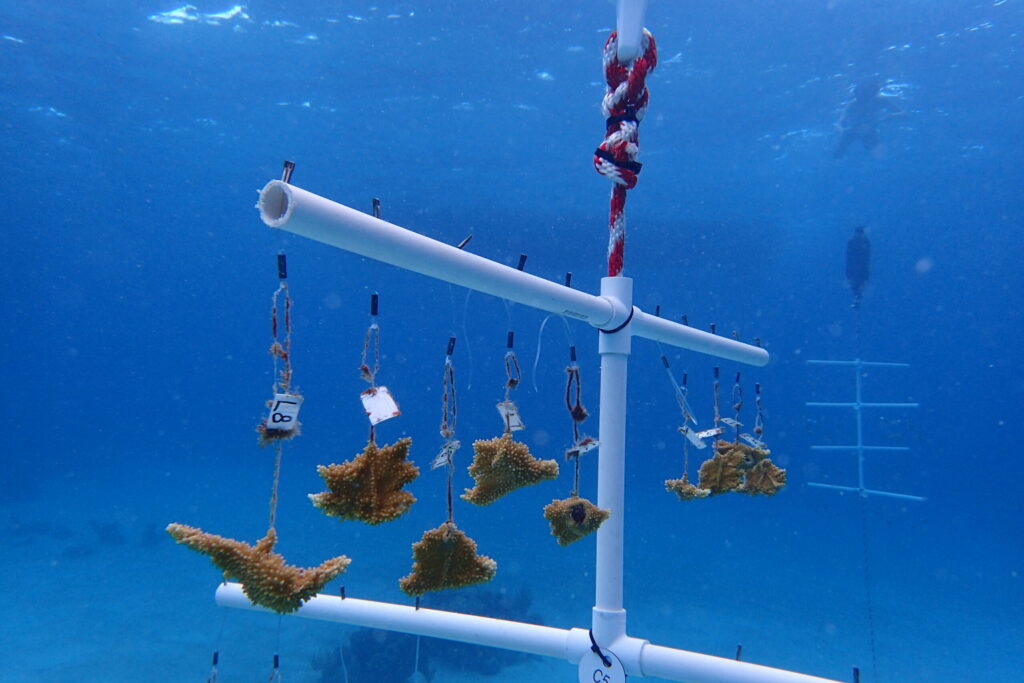
Straetmans recalls an instance that showed the need for data in sustainability efforts: “We had a client that said to all the bidders ‘you can do this project, but you have to do half of the CO2’. And all bidders said ‘Of course we’ll do half of the CO2’, but then the client realised, ‘I’ve got no clue how I’ve got to check this’. So, on our side, but also on the client’s side, there’s a big question of making it transparent; measuring it.
Digitalisation efforts can provide enormous data that Van Oord and other dredging companies can use to make their activities more efficient and reduce their environmental impact. In order to do that, Van Oord is planning on placing sensors in their infrastructure to obtain relevant data. However, there are still several challenges to overcome, including the placement of the sensors, the type of sensors to be used and how to store the data that is collected. [Text Wrapping Break][Text Wrapping Break]“At this moment, the data of the ships is going all directions,” Straetmans says. “Knowing where the data should go and how we store it and start making use of it; that’s a really long journey.”
It may be a lengthy journey, but it will be worth it. “There’s so much upside,” says Straetmans. “Especially in offshore wind, there’s a move to drive down costs, because right now they’re not subsidised. I think doing things digitally together with clients could mean a huge opportunity for driving down costs. There’s also the drive for sustainability because, when you make sustainability transparent, it creates a drive to become more sustainable.
While Van Oord’s digital transformation will help to, at the very least, reduce the damage to the oceans, it will also streamline the company’s internal affairs. Straetmans describes Van Oord as “an Excel-based company … There are a lot of people that have no clue what the internet is about. So, it’s a huge step that the company needs to make.”
Imagine: 150 windmills fully digitalised. You can just bring yourself into the windmill, into the turbine, through the deck, and even watch what's happening on the sea
One of its main focuses is on client relationships. “We’re helping our commercial guys to be more on top of their commercial information,” says Straetmans. “So we give them a dashboard where they can find all the relevant information on the clients that they’re visiting.” In addition, a second project is focused on obtaining and analysing client feedback efficiently.
Another focus is on monitoring, with Van Oord working on developing a tool that would make dredging more efficient. Since a fundamental part of the dredging activity is sand-transportation, this tool would help Van Oord calculate the amount of load that the ships can take, depending on weather, winds, currents and tides.
Many of these technologies have already been put in place in other industries. However, Straetmans states that there are many instances in which the maritime industry has to face problems that are specific to its activities and that create great difficulties for the company’s digitalisation efforts.
An example of this is in the monitoring of windmill installation and maintenance. “For every bolt that is adjusted in a windmill; they have to take a picture with a nanometer or a pressure meter, and push the bolt so that they know that the bolt is fixed,” he says. “And they may take a picture so that they can show the client with what force that bolt has been adjusted up to that level. And you’re talking about a 100-metre wind blade windmill.
“So, it’s very much an industry where there’s a huge need for information security-wise, insurance-wise but also operational and also maintenance-wise, and there are many suppliers involved. That’s a big, big quest, I think.”
Sustainability is becoming more and more crucial, but I think it should even grow further
In contrast to other sectors, such as those that revolve around digital innovation and are leaning more and more towards collaboration between companies and providers, the maritime industry’s mentality doesn’t quite work like that. Straetmans defines it as “I do best and I hope I win. And, in the end, if I get the best deal from my supplier, then maybe I win better.”
In order for these efforts to really make a difference, the suppliers need to be fully on board. “We find some clients that are working in this digital space already, but very in the beginning,” he says. “This is a big, big challenge for the whole industry. That’s also why I like it because there’s so much opportunity still.”
Straetmans hopes that these challenges will be overcome in the near future and that, in less than 10 years, Van Oord’s digitalisation efforts will have come to fruition. Within the next decade, he hopes to be able to be working with full digital twins of Van Oord’s projects. “Imagine: 150 windmills fully digitalised in time,” he says. “You can just bring yourself into the windmill, into the turbine, through the deck, and even watch what’s happening on the sea.”
Straetmans also hopes that by 2030 the company will have passed the sensitisation and data analysis stage and is “a 100 per cent focused on mitigating and potentially on net positive contribution to sustainability.”
Straetmans sees great potential for Van Oord to use its knowledge and expertise on maritime ecosystems to support further research on this hidden area of the planet. “We measure ocean beds before we do a project,” he says. “We know what its structure is, what it looks like, what kind of sand it has. So that would be one of my aspirations: to know everything that’s happening in oceans and what they need. That’s an opportunity that I hope the company engages on. We’re not there yet, but it’s growing.”

